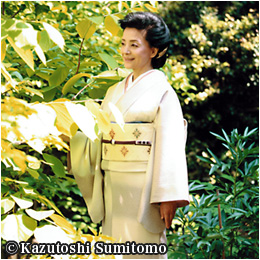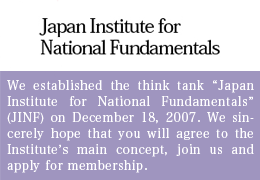Does the US Really Welcome an Independent and Strong Japan?
China has launched “regular fishery patrols” in the South China Sea to “safeguard the legitimate interests of local fishermen” effective March 10, according to a dispatch by the mass-circulation conservative Japanese daily Sankei Shimbun.
Sankei reports China has established a large-scale maritime surveillance force made up of 21 large and medium-sized surveillance ships with a combined complement of 3,000 men. Three of these ships, including the 3,980-ton Haijian 83 belonging to the China Marine Surveillance, have been deployed in the vicinity of the Paracel Islands (in the northern area of the South China Sea, east of Viet Nam and south of China.) In addition, several other ships, such as the helicopter-mounted agricultural ministry patrol boat, the Yuzheng 310 (2,580 tons), have been patrolling around the Spratly Islands (in the southern area of the South China Sea, east of Malaysia and west of the Philippines).
Such tough Chinese measures implemented in the South China Sea are bound to be repeated in the East China Sea, which embraces the disputed Senkaku Islands. What can be expected to take place in the near future in connection with the Senkaku dispute? Inside the Chinese People’s Liberation Army, a brilliant account of the inner workings of the PLA by journalist Satoshi Tomisaka (Bungei Shunju Ltd., Tokyo; 2012), gives one ample food for thought.
Immediately after a Chinese trawler rammed a Japan Coast Guard (JCG) patrol ship in Japanese territorial waters off the Sentakus on September 7, 2010, writes Tomisaka, Section 2 of the General Staff Office (GSO) of the People’s Liberation Army (PLA) drafted a classified document pertaining to what China’s new posture should be towards Japan in connection with the dispute. The section is charged with external intelligence, among other things.
Contained in the document were proposals for three tough steps to be taken against Japan, “temporarily discarding” the past policy of seeking friendly relations:
(1) A grand land-sea-air maneuver must be conducted in the East China Sea as the first step; (2) China must continue deploying large patrol ships (more than 1,000 tons) in the areas surrounding the Senkakus; and (3) The PLA Navy’s special landing forces and its special operations unit must land on Uotsuri-jima, the largest of the Senkaku Islets, erect a monument declaring China’s ownership of the islands, and withdraw as swiftly as possible.
China has since maintained tough measures against Japan vis-à-vis the Senkakus. It violated Japanese air space beginning last December 13, and its air force fighters have since infiltrated into Japan’s air defense identification zone (ADIZ) on a regular basis. In late January, a PLA Navy warship locked weapons-targeting radar on a helicopter and a destroyer belonging to the Japan Self-Defense Force (JSDF) on the high seas. We might as well firmly bear in mind that there apparently exists an irresistible urge on the part of the PLA to take military action against Japan.
How can Japan, the US, and China manage to overcome this tense situation in the East China Sea? Professor Joseph Nye of Harvard University presents one view in an article in the current edition of Chuo Koron, a left-leaning monthly magazine. (The original piece, entitled “Our Pacific Predicament,” appeared in The American Interest, a public policy journal in the US.)
“Equilateral Triangle” Relations among Japan, the US, and China?
To put his conclusion first, Prof. Nye refers to a proposal suggested by the Economist, asserting that “the Japanese government should declare the islets an international marine protected area with neither habitation nor military activities.” Nye calls it “an excellent idea.”
In a nutshell, Nye is proposing that Japan give up its claim to its sovereign land. It should be pointed out that Prof. Nye does not neglect to make a special request that China “refrain from sending official vessels into Japanese waters.” And yet, he only views Japan’s contentions regarding its sovereignty over the Senkakus from a viewpoint that does not quite make sense to most Japanese, explaining:
“Though Japan had administrative control over the Senkakus (following their return from the US, together with Okinawa, in 1972), Chinese ships would occasionally enter Japanese waters to assert China’s legal position. In Chinese eyes, this was the status quo Japan destroyed with the September 2012 purchase [from the Japanese owner of the islets by the Japanese government].
This is exactly how the Chinese view the situation. From the Japanese standpoint, the Senkaku Islands were formally incorporated into the Japanese archipelago in 1895, and were inhabited by as many as 248 Japanese bonito fishermen, albatross hunters, and their dependents at one point. This bitter dispute has ensued only because China announced its ownership of the islands out of the blue – after a discovery of abundant undersea oil reserves around the Senkakus in the 1970s. Because Prof. Nye fails to recognize this fact, he has come up with the wrong conclusion.
Having taken note of what a number of liberal thinkers in the US have to say about the Senkaku dispute, I cannot erase the impression that they tend to listen more attentively to the Chinese contentions. Typically, Prof. Nye’s view on China appears patient and generous, exuding deep respect for the nation and its heritage. While obviously agreeing with “some analysts” that “China cannot rise peacefully, and will seek a form of hegemony in East Asia that will lead to a conflict with the United States and Japan,” Nye assumes a posture of benevolently waiting for China to mature, noting: “If we treated China as an enemy, we were guaranteeing an enemy in the future. If we treated China as a friend, we could not guarantee friendship, but we kept open the possibility of more benign futures.” Obviously, he has no intention whatsoever of ever proposing a containment of China.
Nye’s belief that US national interests lie within an amicable triangle between Japan, the US, and China reminds one of the idea once proposed by a former Japanese foreign minister, Koichi Kato, and his backers. How, then, does Prof. Nye envision Japan’s position in that relationship? Writes Prof. Nye:
“Could a revived Japan, a decade or two hence, become a global challenger [threatening the US] economically or militarily, as was predicted two decades ago? It seems unlikely…Some politicians have talked about revising Article 9 of the postwar constitution, which restricts Japan’s forces to self-defense, and a few have spoken of nuclear armament, but neither seems likely anytime soon.”
I wonder if such an analysis might not be better described as mere wishful thinking.
While serving as an Assistant Secretary of Defense under President Clinton, Prof. Nye put together the so-called “Nye Report” in 1995 – an East Asian strategic analysis. Positioning Japan as pivotal to the US’s world strategy, the report undeniably reflected a subtle wariness towards Japan revising its constitution or becoming more independent militarily.
Is Abe a “Nationalist”?
Zbignew Brzezinski, another American expert on Japan, defined Japan as “a de facto protectorate” of the US in the early 1970s. A similar view of Japan is conspicuous in Nye’s comments. It is a view that deems it appropriate for Japan to not pursue a constitutional revision and instead remain within the confines of its “peace constitution.” This idea reflects a reluctance to recognize Japan’s sovereign independence in terms of military and defense matters. I wonder if it is not the case that, generally speaking, a fear of Japan seeking sovereign independence resides in the minds of those in the US who are knowledgeable about Japan?
While noting that Japan has an impressive historical record of “reinventing itself” by overcoming major crises such as the Meiji Restoration, the Russo-Japanese War, and World War II, Prof. Nye notes that change “will not be easy” for Japan this time.
Would it be wrong to regard this analysis as the reflection of a view which fundamentally believes that Japan would be wise to remain within the framework of US protection and to not become any stronger militarily? This despite the fact that Japan is a US ally technically fully capable of as much military cooperation as the US desires.
As regards Prime Minister Abe, Nye writes: “Shinzo Abe, president of the Liberal Democratic Party and now two-time Prime Minister, has a reputation as a nationalist. He recently visited the Yasukuni Shrine, a Tokyo war memorial that is controversial in China and Korea, and just hours after his election he warned China over the Senkaku issue.”
Although people often refer to Abe as a “nationalist” or even an “ultra-nationalist,” I myself find such rhetoric quite inappropriate. Isn’t it only natural that the leader of a country warn another country when there have been intrusions into its territory, or make a visit to a national shrine to thank and honor those who sacrificed themselves for their country? I think these practices are quite common in the United States, for example.
How, then, should we cope with the reality under which no small number of those knowledgeable about Japan in our vital ally – such as Messrs. Nye and Brzezinski – view Japan in this fashion? When we detect a delicate nuance in the assertions of these intellectuals indicating that they really do not wish to see Japan become a thoroughly independent nation in the true sense of the word, we are suddenly reminded of the fact that the biggest challenge for Japan as it strives to be a genuinely independent and strong nation is to win the understanding and support of the US – our vital Pacific ally.
(Translated from “Renaissance Japan” column no. 550 in the March 21, 2013 issue of The Weekly Shincho)








